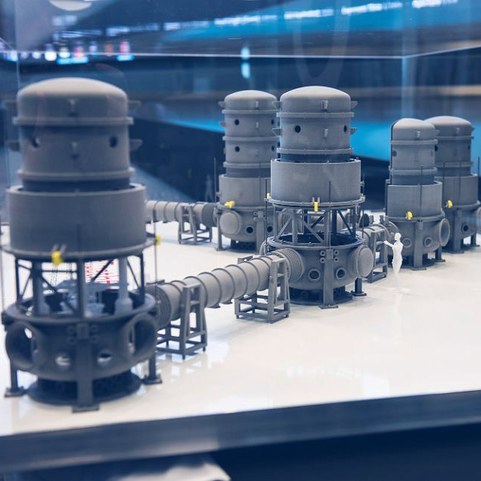Interreg Vlaanderen Nederland - ETpathfinder

Introduction
ETpathfinder is a R&D infrastructure for testing and prototyping innovative concepts and enabling technologies for the Einstein Telescope, the first of a new class of future gravitational wave observatories. To do this a joint R&D facility is under construction in Maastricht where new technologies for mirrors, cryogenics, seismic isolation and advanced control technology are brought together.
Project description
The discovery of gravitational waves from merging black holes and neutron stars by Advanced LIGO and Advanced Virgo marked the beginning of new era in observing our universe and scientist are keen to fully open up this new window to the (dark side of the) cosmos.
The Einstein Telescope will detect several hundred thousands gravitational wave signals per year and allow us to listen to the sound of merging black holes across the entire universe. For the first time, researchers will be able to study the precise structure of neutron stars, the birth of black homes and the structure of the universe immediately after the Big Bang.
Using advanced laser-interferometry methods, the Einstein Telescope will be able to achieve a design sensitivity of 22 decimal places. This means that it can detect differences in distance ten thousand times smaller than the size of the protons in an atomic nucleus. To achieve that incredible accuracy, the observatory requires unique technologies, some of which are not even fully developed yet.
Objectives
These are the objectives of ETpathfinder:
- New Temperature: The mirrors in the Einstein Telescope will be cooled to temperatures of 120K or even 15K, in contrast to the room temperature mirrors of the present GW detectors. This entails the development of low-noise cryo-coolers and ways to couple the cooling power to the mirror test masses.
- New Mirror Material: While present mirrors in GW detectors are based on fused silica, the ET will use silicon mirrors. This has important implications on the fabrication of the substrate and the coating of the mirror surface.
- New Wavelength: A consequence of the use of silicon mirrors is the necessity to go to longer wavelengths for the lasers, up to 1550 and 2100nm. A range of laser technologies for these wavelengths need to be developed.
- Advanced Quantum Noise Reduction Techniques: The sensitivity goals at low frequencies will require innovative techniques to reduce the noise in ET. Such techniques can be tested in conjunction with the other techniques listed above in the ETpathfinder.
Role of Ghent University
Ghent University participates in the construction of the large high-vacuum system for ETpathfinder. The requirements on the vacuum are very high to reduce as much as possible the noise.
The COCOON research group is active in the study of new mirror coating techniques and characterization of the new coatings.
Dutch summary
De volgende generatie van zwaartekracht observatoria zal met het gebruik van nieuwe technologieën een ongekende precisie en gevoeligheid bereiken. In Europa is dit het Einstein Telescope project dat de constructie van een ondergronds complex van laser interferometers voorziet begin de jaren 2030. Om de nieuwe technieken te testen op volle schaal wordt in het ETpathfinder laboratorium (Maastricht) een faciliteit uitgebouwd waarin verschillende partners uit Nederland, België en Duitsland de relevante technologieën kunnen inbouwen.
Website
Contact
Prof. Dirk Ryckbosch
Department Physics and Astronomy
Phone number: +32 9 264 6543
E-mail
